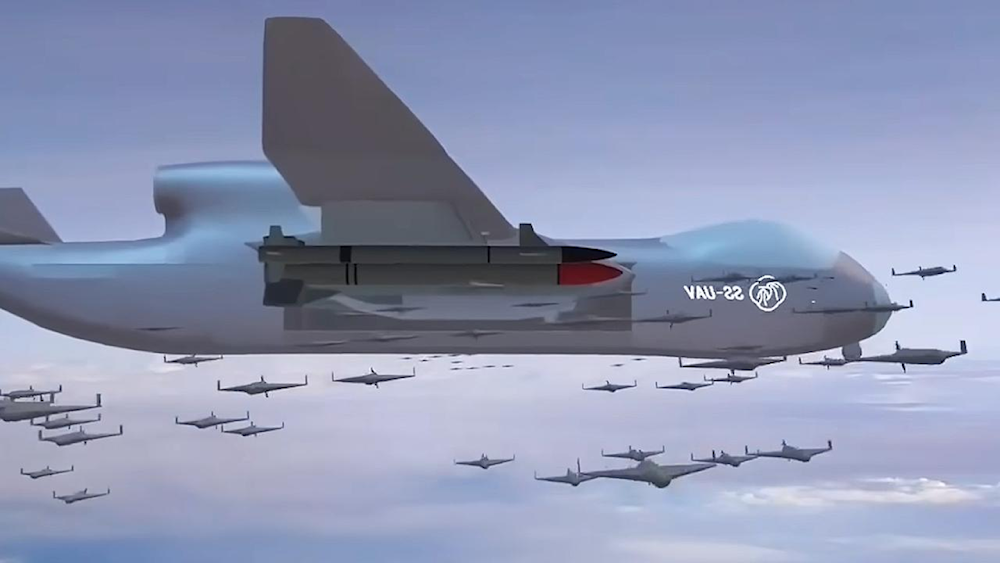China unveils drone mothership capable of swarm attacks
China is preparing to launch the Jiu Tan, a drone mothership that can deploy 100 kamikaze UAVs at once, signaling a leap in military aerial capability.
-

A 3D render of China's planned "drone mothership" (X/@XH_Lee23)
China is set to launch a new high-altitude unmanned aircraft capable of releasing up to 100 kamikaze drones simultaneously, in what military observers say could mark a significant advancement in drone warfare technology. The aircraft, named Jiu Tan, which translates to “high sky,” was developed by Shaanxi Unmanned Equipment Technology and is designed to enhance the operational reach of the Chinese air force.
State media reported over the weekend that the fourth prototype of the Jiu Tan has completed structural assembly and entered the testing and installation phase. The aircraft is expected to embark on its maiden flight next month.
Initially unveiled at the Zhuhai Air Show in November, Jiu Tan features a 25-meter wingspan, a flight endurance of 12 hours, and a maximum range of 7,000 kilometers (4,350 miles). It has a take-off weight of 16 tons and can transport up to six tons of payload, including surveillance equipment, munitions, or unmanned aerial vehicles.
The aircraft’s most notable capability is its ability to deploy large-scale drone swarms mid-flight, potentially overwhelming enemy defenses by sheer volume and unpredictability. State-released video footage simulated the dramatic visual of a synchronized UAV launch sequence.
Tactical advantages of drone swarm warfare
Drone swarms offer strategic advantages in surveillance, intelligence gathering, and real-time reconnaissance, particularly in contested regions such as the Taiwan Strait. Analysts warn that such a capability could play a central role in a future conflict scenario between China and Taiwan.
In addition to drone launches, the Jiu Tan can also be equipped with cruise missiles and air-to-air weapons like the PL-12E, further expanding its offensive potential.
Its ability to operate at high altitudes gives it an edge against radar detection and many ground-based air defense systems. This places the aircraft among a new class of high-survivability aerial weapons platforms.
China has rapidly developed a fleet of drones capable of long-range and strategic operations. It has previously deployed models such as the WZ-7 and TB-001 Scorpion drones around disputed territories in the South China Sea and near Taiwan.
The Jiu Tan follows China’s earlier test of the TP1000, the first unmanned cargo drone capable of carrying over a ton of goods. These developments reflect Beijing’s continued ambition to rival US dominance in unmanned warfare, particularly against platforms like the RQ-4 Global Hawk and the MQ-9 Reaper.
However, unlike its American counterparts, the Jiu Tan’s capacity for swarm deployment sets it apart. Neither the Global Hawk nor Reaper has the capability to launch hundreds of drones at once, a feature that makes China’s new UAV carrier a significant strategic asset.
As drone warfare continues to reshape modern military strategy, from Ukraine’s FPV drone strikes on Russian armor to long-range hits deep inside enemy territory, the launch of the Jiu Tan highlights China’s intent to stay at the cutting edge of airborne warfare.

 3 Min Read
3 Min Read










